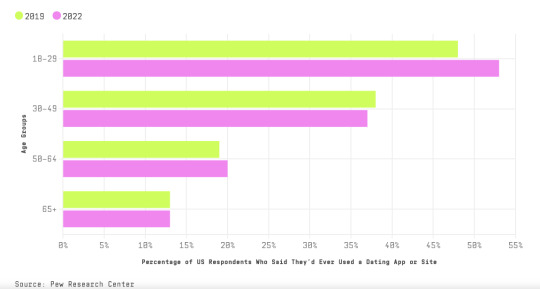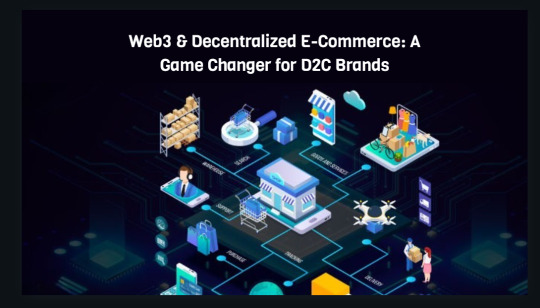#Reducing Technology Friction
Explore tagged Tumblr posts
Text
Accelerate your Business Insights with Data Analytics
We extend our heartfelt Gratitude to all customers of Sedin who were present for Tableau event "Accelerate your Business Insights with Data Analytics". A Special thanks to our brilliant speakers, Mr. Surendar Selvakumar - Tableau Architect (Sedin) & Mr. Muthukumar S M - Principal Solution Engineer (Tableau) for enlightening us with their expertise. Thank you to all our amazing attendees for joining us at the event.
#savex#tableau#business#gratitude#dataanalytics#engineer#techevent#techcompany#techcommunity#techadvancements#ictbusiness#cloud services#cloud aesthetic#cloud solutions#Reducing Technology Friction
1 note
·
View note
Text
Athletes Go for the Gold with NASA Spinoffs
NASA technology tends to find its way into the sporting world more often than you’d expect. Fitness is important to the space program because astronauts must undergo the extreme g-forces of getting into space and endure the long-term effects of weightlessness on the human body. The agency’s engineering expertise also means that items like shoes and swimsuits can be improved with NASA know-how.
As the 2024 Olympics are in full swing in Paris, here are some of the many NASA-derived technologies that have helped competitive athletes train for the games and made sure they’re properly equipped to win.

The LZR Racer reduces skin friction drag by covering more skin than traditional swimsuits. Multiple pieces of the water-resistant and extremely lightweight LZR Pulse fabric connect at ultrasonically welded seams and incorporate extremely low-profile zippers to keep viscous drag to a minimum.
Swimsuits That Don’t Drag
When the swimsuit manufacturer Speedo wanted its LZR Racer suit to have as little drag as possible, the company turned to the experts at Langley Research Center to test its materials and design. The end result was that the new suit reduced drag by 24 percent compared to the prior generation of Speedo racing suit and broke 13 world records in 2008. While the original LZR Racer is no longer used in competition due to the advantage it gave wearers, its legacy lives on in derivatives still produced to this day.

Trilion Quality Systems worked with NASA’s Glenn Research Center to adapt existing stereo photogrammetry software to work with high-speed cameras. Now the company sells the package widely, and it is used to analyze stress and strain in everything from knee implants to running shoes and more.
High-Speed Cameras for High-Speed Shoes
After space shuttle Columbia, investigators needed to see how materials reacted during recreation tests with high-speed cameras, which involved working with industry to create a system that could analyze footage filmed at 30,000 frames per second. Engineers at Adidas used this system to analyze the behavior of Olympic marathoners' feet as they hit the ground and adjusted the design of the company’s high-performance footwear based on these observations.

Martial artist Barry French holds an Impax Body Shield while former European middle-weight kickboxing champion Daryl Tyler delivers an explosive jump side kick; the force of the impact is registered precisely and shown on the display panel of the electronic box French is wearing on his belt.
One-Thousandth-of-an-Inch Punch
In the 1980s, Olympic martial artists needed a way to measure the impact of their strikes to improve training for competition. Impulse Technology reached out to Glenn Research Center to create the Impax sensor, an ultra-thin film sensor which creates a small amount of voltage when struck. The more force applied, the more voltage it generates, enabling a computerized display to show how powerful a punch or kick was.

Astronaut Sunita Williams poses while using the Interim Resistive Exercise Device on the ISS. The cylinders at the base of each side house the SpiraFlex FlexPacks that inventor Paul Francis honed under NASA contracts. They would go on to power the Bowflex Revolution and other commercial exercise equipment.
Weight Training Without the Weight
Astronauts spending long periods of time in space needed a way to maintain muscle mass without the effect of gravity, but lifting free weights doesn’t work when you’re practically weightless. An exercise machine that uses elastic resistance to provide the same benefits as weightlifting went to the space station in the year 2000. That resistance technology was commercialized into the Bowflex Revolution home exercise equipment shortly afterwards.
Want to learn more about technologies made for space and used on Earth? Check out NASA Spinoff to find products and services that wouldn’t exist without space exploration.
Make sure to follow us on Tumblr for your regular dose of space!
2K notes
·
View notes
Text
"In a highly-anticipated world-first, the Texas Heart Institute has successfully implanted an artificial titanium heart that uses the same technology as bullet trains to pump blood mechanically throughout the body.
Called the Total Artificial Heart (TAH), the feat is seen as a major step in keeping people alive for longer and longer periods while they wait for heart transplants.
Texas Heart partnered with the medical tech company BiVACOR to create the TAH. It’s a titanium-constructed biventricular rotary blood pump with a single moving part that utilizes a magnetically levitated rotor that pumps the blood and replaces both ventricles of a failing heart.
The benefit of using magnetic levitation is that none of the moving parts ever scrape or slide against each other, reducing friction, and dramatically increasing the longevity of the device. But what’s really cool is the TAH can pump blood at a rate of 12 liters per minute, enough to allow an adult male to engage in exercise.
The first-in-human clinical study, overseen closely by the FDA, aims to evaluate the safety and performance of the BiVACOR TAH as a bridge-to-transplant solution for patients with severe bi or univentricular heart failure. Following this first implantation completed at Baylor St. Luke’s Medical Center in the Texas Medical Center, four additional patients are to be enrolled in the study.
“The Texas Heart Institute is enthused about the groundbreaking first implantation of BiVACOR’s TAH. With heart failure remaining a leading cause of mortality globally, the BiVACOR TAH offers a beacon of hope for countless patients awaiting a heart transplant,” said Dr. Joseph Rogers, President and Chief Executive Officer of The Texas Heart Institute and National Principal Investigator on the research.
“We are proud to be at the forefront of this medical breakthrough, working alongside the dedicated teams at BiVACOR, Baylor College of Medicine, and Baylor St. Luke’s Medical Center to transform the future of heart failure therapy for this vulnerable population.”
Heart failure is a global epidemic affecting at least 26 million people worldwide, 6.2 million adults in the US, and is increasing in prevalence. Heart transplantations are reserved for those with severe heart failure and are limited to fewer than 6,000 procedures per year globally. Consequently, the US National Institutes of Health estimated that up to 100,000 patients could immediately benefit from mechanical alternatives.
The successful implantation of BiVACOR’s TAH highlights the potential of innovative technologies to address critical challenges in cardiac care, such as long transplantation waitlists.
“This achievement would not have been possible without the courage of our first patient and their family, the dedication of our team, and our expert collaborators at The Texas Heart Institute,” said Daniel Timms, founder and CTO of BiVACOR."
youtube
-Article via Good News Network, August 1, 2024. Video via 7News Australia, July 26, 2024.
#heart transplant#organ transplant#medical news#public health#organ donation#heart disease#titanium#texas#australia#cyborg#mechanical#transhumanism#the future is now#like for real apparently#good news#hope#Youtube
588 notes
·
View notes
Text
I've been researching and experimenting around rehabilitating my relationship with technology for a few years now. What I've realized is there's a big gap between what the research shows and what gets bumped by algorithms like YouTube - which is probably not an accident given the aims of the algorithm.
Here are my biggest takeaways so far:
- Dumbphones, lockboxes, switching to physical media, most everything you see online about coping with tech overwhelm - these plus a very long drying out period are best in cases of genuine tech addiction. Otherwise it's overconsuming to solve and overconsumption problem. Our attempts to rehabilitate our relationships with tech are being hijacked and comodified which keeps us dissatisfied/on the hamster wheel.
- Not all screen time is created equal - research shows this. Some impacts people positively, some neutrally, some negatively. Targeting screen time as a metric tends to make people feel happier in the short term by minimizing the negative category but this often leads to a level of untenable friction toward the positive and neutral types in the long term that tends to lead to a relapse and "binging" the negative. Shame leads to a repeat of the cycle.
- Social media is consistently shown as one of the most negative impacts on psychological wellbeing. Your biggest bang for your buck will be in either leaving, modifying, or heavily structuring your use of social media.
- If you can't leave social media, taking it off of your phone and using a plug in to block the feed + ads on desktop can help. Still want to see what your friends and family are posting? Create a folder for bookmarks of direct links to their profile/main pages or use an RSS reader like Feedly. Curate it carefully; avoid outrage regardless of whether you share it's leanings.
- There are other targets that I personally think would make people happier with their tech usage overall: eliminating/minimizing subscriptions, avoiding ads, prioritizing privacy, and using human curation. While they each have benefits on their face, the shifts in usage they encourage are ones that people generally report more satisfaction with.
- Eliminating/minimizing subscriptions means more money each month but it also usually means cutting out things like streaming. The big non-financial con of streaming is that it can lead to overwhelm and perfectionism - thereby decreasing satisfaction. The upside of cutting it out is that it pushes people toward renting, owning, or ripping media they love which requires intentionality and curation.
- If really you want free streaming, check out whether your library has Kanopy, Hoopla, or Freegal. You can still get some of the benefits by embracing the reduced selection they offer. They also likely still have CDs and DVDs you can rip for your personal collection.
- Avoiding ads and prioritizing privacy go hand in hand. This usually means using an ad blocker and shifting away from Apple and Google and Meta where possible - deleting apps, switching services, blocking feeds, switching browsers. I can't deGoogle completely at the moment but when I shifted in the ways I was able, I started scoring my time online more positively and I took more breaks/spent less time on it.
- Seek out human curation: library newsletters, listen to local radio, ask your friends and family, check out round ups and newsletters from your favorite creators, share your own. Human curation is less likely to be driven by business interests and while there's no algorithm free media rec these days, they're not being given to trap you on a platform.
- Focusing on a quantitative metric (like screen time) is the gateway to consumerism. Stop looking for a cure and start discovering your personal philosophy. Talking about the algorithmic alienation from our actual feelings and desires is too much for this post but simply put there is no "pure" experience you're missing out on by using a screen. Notice how you're feeling, respond with kindness, and let the rest go. Shame is a weapon in the hands of corporations.
Hope this is helpful for someone out there.
68 notes
·
View notes
Text
"We keep adding layers of technology meant to reduce friction, but it just winds up abstracting us from other people, from our neighbors and communities, while forcing clunky, barely functional, and always extractive apps into every facet of our daily lives. In some parts of the city, you can't even park your car anymore without downloading an app. "
36 notes
·
View notes
Text

Elon Musk’s Five-Pronged Approach to Reducing Government
Elon Musk, the billionaire entrepreneur behind Tesla, SpaceX, and X (formerly Twitter), has long been vocal about his concerns regarding excessive government intervention. Whether it’s through regulatory pushback, decentralization efforts, or technological disruption, Musk is actively working to reduce government influence in five key ways.
1. Challenging Regulatory Overreach
Musk has repeatedly criticized government regulations that he believes stifle innovation. From Tesla’s battles with dealership laws to SpaceX’s friction with the Federal Aviation Administration (FAA), he has frequently clashed with authorities over what he sees as unnecessary red tape. By publicly pushing back against these restrictions, he aims to set precedents that could lead to reduced regulatory burdens across industries.
2. Privatizing Space Exploration
NASA was once the sole player in space exploration, but SpaceX has shifted the industry toward privatization. By reducing dependence on government-funded programs and proving that private companies can outperform traditional bureaucratic models, Musk is driving a shift away from government monopolization of space travel.
3. Advocating for Free Speech and Decentralization
After acquiring Twitter (now X), Musk positioned himself as a champion of free speech, often criticizing government involvement in content moderation. He has also expressed support for decentralized social media and blockchain technologies, which could reduce reliance on centralized, government-regulated platforms.
4. Developing Alternative Energy and Infrastructure
Tesla’s push for electric vehicles and solar power indirectly challenges government-controlled energy industries. By promoting self-sufficient energy solutions, such as home battery storage and off-grid living, Musk is creating alternatives that reduce reliance on state-controlled utilities and fossil fuel subsidies.
5. Advancing AI and Automation to Limit Government’s Role
Musk has a complex stance on artificial intelligence (AI), both warning about its dangers and investing in its development through xAI. By accelerating automation, he envisions a future where technology reduces the need for bureaucratic inefficiencies, potentially shrinking government involvement in areas like labor regulation and public sector jobs.
Conclusion
Musk’s efforts to reduce government influence aren’t just theoretical; they manifest in tangible actions across multiple industries. Whether he succeeds or not remains to be seen, but his impact is already reshaping the relationship between innovation and regulation.
#news update#politics#usa news#us politics#donald trump#news#public news#world news#breaking news#latest updates#opinion#elon musk#protest#nonbinary#transgender#tweets#anti trump#president trump#trump administration#inauguration#trump 2024#fuck trump#maga#jd vance#trump#us news#usa politics#us presidents#us propaganda#us polls
26 notes
·
View notes
Text
In her 2012 book, Addiction by Design, anthropologist Natasha Dow Schüll lays out the different technological mechanisms casinos employ to keep people gambling. From the architecture of buildings and placement of ATMs to the design of casino carpets—all of it exemplifies strategic calculation. As a blurb for a gambling trade show once put it, the various elements making up the modern gambling experience are “symphonies of individual technologies” that come together to “create a single experience,” calibrated in a way to keep people playing, to maximize “time on device.”
Sound familiar? Schüll thinks so. “There’s something very similar about the mechanisms that are built into dating apps, especially with swiping,” she says. “Swiping left and right—it’s almost like a horizontal slot machine. You really don't know what you're going to get.”
Although Schüll doesn’t think these similarities are limited to just dating apps (she mentions the stock-trading app Robinhood), she does believe they all share one thing in common: strategies to hold users in place and reduce friction. So what does it mean then when friction enters the picture? When users spend less time in the “hold” and less energy on the machine?
It’s true that the amount of time spent on dating apps has declined over the years. A recent Forbes poll of dating app users showed that, on average, they spend about 51 minutes per day on them. Ten years ago they were devoting 100 minutes daily to platforms like Bumble.
It’s also true that the growth of paying users has slowed down of late, accompanied by a slight dip in the number of Americans who say they use dating apps. However, one app in particular is down much more than any other—Tinder, creator of the swipe. Though Tinder still holds the title for most commonly used dating app, its overall downloads have been dropping since 2020, while downloads of apps like Bumble and Hinge have continuously increased since 2021. Tinder has also seen a reduction in its paying users over the past two years, while its monthly active user numbers have dipped in the past three quarters.
Explanations for this decline are as numerous as the number of dating apps on the market. “It could be some wearing off of the novelty effect, it could be disappointment, it could be that there’s other activities that are taking their time, like sports gambling, it could be exhaustion,” says Schüll.
To her last point, dating app fatigue is a real thing. That same Forbes poll showed that 80 percent of millennial users—the group that utilizes these apps the most—reported feeling worn out.
Another cause attributed to this decline is the dating app exodus, which occurred after a spike in usage during the pandemic, as many young users are now seeking more “real-world” connections. And of course there’s that age-old tedium: boredom.
“In design, they're constantly upping the ante—if there’s a video poker machine, then there’ll be triple video poker, and then it's 10-play video poker, 100-play video poker,” Schüll says. “When you move to the next one, you sort of can’t go back. So it's a tolerance effect. Maybe these apps exhausted the potential to hold people to a certain point and didn't do that work of taking it to the next, higher, more intense level.”
Regardless of the reason for the decline, one thing is for sure—dating apps are still alive and will not go away anytime soon. And if there’s anything to take away from the fact that people are jumping the Tinder ship for other dating apps, let it be that the real contenders for our love and attention are the ones that aim to hold us in place the longest. The ones that want us to keep playing the game forever.
Yes, Dating App Usage Has Somewhat Peaked
Generally speaking, dating app usage plateaued during the time of the Covid-19 lockdowns in 2020. Between 2019 and 2022, the percentage of US adults using online dating sites dropped from 18 percent to 15 percent.

Generational Shifts in App Usage
Looking at the number of adults engaged in online dating doesn’t tell the whole story. In some cases, it’s a matter of some age groups falling off while others pick up the slack. In that same four-year span from 2019 to 2022, the number of US adults ages 30 to 49 who said they had ever used a dating app or site dropped by a percentage point, while more people ages 18 to 29 and 50 to 64 got into the game.

No More Pay to Play
One thing about dating apps that people are tired of? Paying for them. Growth in the number of users opting to pay for premium dating app services is petering out.

Millennials Spend Less Time Swiping
In 2018, millennials spent 90 minutes a day on dating apps. By last year, that number was down to nearly 56 minutes per day.

The Big Shift in Dating Apps? Which Ones People Use
Despite all the changes in online dating habits, the biggest shift isn’t that people are leaving apps, it’s that there are shifts in which ones are popular. The app that’s taken the biggest hit? Tinder. While total dating app downloads worldwide have remained above 120 million annually since 2020, the Tinder slice of that download pie has gotten smaller, while apps like Hinge and Bumble have seen an increase in downloads—a bit of a sick burn for the app that started it all.

10 notes
·
View notes
Text
Researchers have demonstrated new wearable technologies that both generate electricity from human movement and improve the comfort of the technology for the people wearing them. The work stems from an advanced understanding of materials that increase comfort in textiles and produce electricity when they rub against another surface. At issue are molecules called amphiphiles, which are often used in consumer products to reduce friction against human skin. For example, amphiphiles are often incorporated into diapers to prevent chafing. “We set out to develop a model that would give us a detailed fundamental understanding of how different amphiphiles affect the surface friction of different materials,” says Lilian Hsiao, corresponding author of a paper on the work and an associate professor of chemical and biomolecular engineering at North Carolina State University. “The model helps us understand the molecular basis for friction reduction and can be used by engineers to tailor a material’s properties for different applications.”
Read more.
#Materials Science#Science#Wearable technology#Electronics#Molecules#Haptics#Surfaces#North Carolina State University
8 notes
·
View notes
Text
Undertale Hollow AU Backstory

*The timeline takes place in the Pacifist Ending, but this time, Clover doesn't choose to sacrifice himself and stays to live with his friends
* However, two years later, the core failed and stop working.
* The King Asgore asked Alphys the Royal Scientist to repair the core, and during the breakdown, the abandoned Steamworks was reactivated, and the power was maintained by white plants.
* However, the situation is not promising, and as time goes on, the problems of unemployment, productivity decline, and technological regression caused by the shutdown of the core become more and more prominent, the dissatisfaction and disappointment of the monster society with this situation is growing day by day.
* At the same time, the progress of the core repair plan is not optimistic.
*Dr.Alphys believes that there is still hope for monsters, and that with persistent research, no matter how long it takes, they will always find a way to repair the core and restore the underground energy supply system.
* In order to explore a way to fix the core, she wanted to use some of the materials left behind by Chujin, and Axis as one of the few thinkable robots in Steamworks, was chosen to negotiate with her.
* However, the two sides diverged their opinions, and in the end, after a major failure in negotiations, the two sides inevitably broke up.
*The Steamworks abandoned the monster and chose to cut off the power supply to the underground.
* This move escalated the friction between the two sides, and a civil war inevitably broke out in order to compete for the initiative in energy.
* The Underground,which has lost its power supply, has become extremely frozen, which is a cataclysm for all but Snowdin. The soil became uncultivable, food production was drastically reduced, and famine occurred in many places.
* And the war entered a stalemate, until an abrupt plague broke the stalemate.
* A disease named "Soul Illness" begins to spread underground, a disease will gradually deteriorate the soul of the patient , eventually causing die.
* The story of Undertale Hollow AU unfolds against such a hellish background
25 notes
·
View notes
Text
- RUNI -
Race Name: Runi Race Nickname(s): N/A Homeworld: Laile
Information One of the primary civilizations in SATIZ-IRATH, the inhabitants of Laile are the descendents of one of the first human expeditions to leave Earth 600 years ago using shuttles that traveled via supercavitation.
The first Runi generation-ships were propelled via supercavitation. Supercavitation utilizes a cavitation bubble to reduce the friction drag on an object to enable high speeds. The shape of the object's nose initiates this bubble. The bubble extends past the aft (back) end of the object, which prevents contact from air or water along its sides. Other advances in Runi spaceflight include hybrid marine and aerospace crafts utilizing electromagnetic fields which create quantum vacuums. This allowed the early prototypes to ignore aerodynamic and hydrodynamic forces, including the craft's inertial mass. Shuttles that do not have soliton cores and are unintended for stellar travel still essentially operate under these basic principles.
Today they are called the RUNI and differ minutely from humans in their appearance, biology and coloring.
Planet
Government: The Confederacy of Laile Environment: H-class (less than 20% surface water - similar to Vulcan or Rigel V) Population: 90 million Capital: Dhavri, Irune Continents: Irune, Mayliz
The Laile Resistance (LR)
Established: 10010 CGE Group: RUNI Leaders: RATAN POLIS, Kaejih Maedaz (POW), Sanew Hishij (DEC). Headquarters: Meili, Irune Size: 13,200 (10220 CGE) Allies: Regional militia groups Opponents: Iro Provisional Militia, Iro Corporate Congress, Laile Armed Forces, the Armed Forces of SATIZ-IRATH, Protocol for the Cessation of Armed Conflict in Satiz-Irath (CACSI)
THE SATIZ-IRATH STAR SYSTEM IS IN THE MILKY WAY GALAXY, 5.025 PARSECS (16 LIGHT-YEARS) FROM EARTH. A PARSEC IS APPROXIMATELY 3 LIGHT YEARS, SO 5 X 3 = 15. HOWEVER, CORRECT INTERSTELLAR NOTATION IS KNOWN BY THE ACRONYM CISR - COMMON INTERSTELLAR REDSHIFT - FOR THE DISTANCE OF AN OBJECT. CISR IS INTELLIGIBLE BY A WIDE VARIETY OF ALIEN NUMERIC SYSTEMS AND DOES NOT RELY ON VARIABLES RELATIVE TO SPECIFIC STAR SYSTEMS (SUCH AS THE SUN).
A non-Federation race (and with little interest in joining the Federation), they made their home in the habitable star-system of SATIZ-IRATH. Their culture has diverged significantly from humanity, as has their genetic structure - more closely resembling Orions than humans. Their world, LAILE, is M3 (Mass Differential 3). which has resulted in adaptations to their musculoskeletal system to withstand the high-atmo. LAILE is M3. This means the field of gravity on Laile is 3x stronger than Earth's. The first expedition to land there required technological adaptation to survive, but over the past 600 years they have begun to evolve a much denser skeletal system (through intentional genetic engineering as well as intermixing with the local Animan Orion [M4] population) and more robust cardiac efficiency.
Technology exists to allow those from M1 and G-class (such as Earth) planets to visit those who diverge significantly more easily, in the form of temperature regulator chips embedded under the skin and gravity equalizer bracelets.
These all operate under the principle of inertia negation, which reduces the wearer's mass to their-normal whilst on the surface of a highly pressurized atmosphere. Planets like Ajilasi Prime (M4) would kill a person who was not wearing a bracelet in short order, as they would very quickly develop the symptoms of crush syndrome. Some people undergo neuromuscular augmentation therapy if they plan on living and working permanently on a disparate MD-world. A mass differential is measured by the variances in newtons per kilogram (N/kg) of a planet's gravity field which is solved by weight divided by mass (mass is solved by volume x density.) Earth's gravity field is 10 N/kg, IRO's gravity field is 20 N/kg, LAILE is 30 N/kg et cetera (these are rounded numbers).
Another factor of their deviations from us is the proliferation of the tropane alkaloid anticholinergic drug hishuri that pervades the environment of Laile. The shur, as it is known, causes brilliant blue eyes in long-term users alongside the potential to develop neurological conditions such as Riel's Syndrome - named for Tala Riel, the McKinley specialist who discovered it.
Also known as Medullary Dysregulation Syndrome or MDS. This causes profound changes to the Runi's vision and breathing, categorized by 3 symptom clusters: agonal breathing, bilateral heterochromic iridocyclitis and stromal apathy, and sleep disturbances. Many also report seizures and cluster headaches. Those who become dependent on hishuri often require Synapse implants to function - these regulate baser functions of breathing and sleeping. The use of hishuri came at a time when the planet was under brutal siege, and every single man, woman and child was required to fight.
For a time their identities were rooted in war and struggle, which eventually took a turn for the worse - one Runi, RATAN POLIS, was unsatisfied when Laile unified and believed it was a sign of weakness. Recruiting from pools of the poor and destitute, orphans and abandoned-ones, he founded the Laile Resistance (LR).

(RATAN POLIS) RATAN POLIS was arrested in 2383 during a visit to Kolar – the Orions handed him over for a significant sum - and during the Interstellar Criminal Court's landmark Federation v. Polis case, he was sentenced to Aoraki Penal Commune in New Zealand, a Special Forensic Unit for violent offenders of his caliber.

(KARIJIN "JIRAN" KELA) Culture Much of Laile is locked in struggle, a desert world with poor surface resources but rich oil deposits, the Iro Corporate Congress (comprised of the Aven people) have waged war against the primary inhabitants for many years.
This has created something of a warrior ethos for the older stratos of Runi, but most young Runi are disillusioned by and therefore abrasive about these things. Within the last half of the 2380s-early 90s, a subculture of Runi has emerged focused on political activism, pacifism, mutual aid and protesting, originating within Kada musical spheres.
Technology The Runi are warp capable. They use soliton drives (described below). They have a lower level of orbital technology, primarily hoppers that require maintenance over time as they're broken-down and second-hand. They use Active Denial Rifles as their primary form of weapon, some units in the Laile Resistance use ion spears. The primary currency on Laile is the cuprate diamond strip, which is a rare material used to create superconductors and reinforce soliton drives.
"Look, Tarish says it's coffee. Well, coffee-ish. With enough caffeine to kickstart a cemetery. I am 100% behind this beverage," he's saying. "OK, so an FTL drive - it's not traditional faster-than-light, either, which was my huge gripe with this, for the record. It uses these things called solitons, which are a wave that maintain shape and energy while moving at constant velocity - it's the shit Lentz posited, that hyper-fast soliton solutions exist within general relativity, and these solitons are maintained integrally by cuprate diamond crystallization - literal superluminal motion enabling objects within the 'wave' to be shielded from tidal forces." ADR stands for Active Denial Rifle (or ADP, for the smaller hand-pistol variant), and it is a ubiquitous directed energy weapon that uses microwaves to burn a subject's skin via the princple of dialectric heating. Most state and non-state parties (law enforcement, military or otherwise) in Satiz-Irath use variations of this weapon, as it provides unparalleled control. This weapon can either be lethal (causing heating past the point of human tolerance) or non-lethal (causing first or second-degree burns) depending on the power of the beam and the length of time it is fired.
species by @gnosticpriesthood !
2 notes
·
View notes
Text
Web3 & Decentralized E-Commerce: What It Means for D2C Brands
The e-commerce landscape is evolving, and Web3 is at the forefront of this transformation. As decentralized technologies redefine how businesses operate, Direct-to-Consumer (D2C) brands must prepare for a future where transactions, ownership, and customer relationships are no longer controlled by centralized platforms. But what does this shift mean for the world of online retail?
Understanding Web3 & Decentralized E-Commerce
Web3 refers to the next phase of the internet—powered by blockchain, smart contracts, and decentralized networks. Unlike traditional e-commerce, which relies on intermediaries like marketplaces and payment processors, decentralized e-commerce eliminates middlemen, giving brands direct control over their operations, data, and revenue streams.
How Web3 is Reshaping D2C Brands
Ownership & Control: Web3 empowers brands to own their customer relationships without depending on platforms like Amazon or Shopify.
Decentralized Payments: Cryptocurrency and blockchain-based transactions reduce dependency on banks and lower payment processing fees.
Smart Contracts for Automation: Agreements between buyers and sellers can be self-executing, reducing fraud and ensuring seamless transactions.
Enhanced Data Privacy: Customers have greater control over their data, fostering trust between brands and consumers.
Tokenized Loyalty Programs: Brands can use NFTs and tokens to create exclusive membership benefits, driving deeper engagement and repeat purchases.
Challenges of Web3 in E-Commerce
Adoption Barriers: Many consumers and businesses are still unfamiliar with blockchain and decentralized systems.
Regulatory Uncertainty: Governments worldwide are still developing frameworks to regulate cryptocurrencies and decentralized transactions.
User Experience: While Web3 offers transparency, its technical complexity may create friction for non-tech-savvy consumers.
The Future of D2C in a Web3 World
Decentralized Marketplaces: Platforms like OpenSea and Rarible are paving the way for decentralized product selling.
Metaverse Shopping: Virtual storefronts could redefine the online shopping experience, allowing customers to interact with products in digital spaces.
Community-Led Growth: Web3 enables brands to build loyal communities through decentralized autonomous organizations (DAOs), where customers have a say in brand decisions.
Seamless Global Transactions: Cryptocurrency adoption will allow brands to expand globally without currency conversion hassles.
Is Your Brand Ready for Web3?
While Web3 is still in its early stages, D2C brands that adapt now will gain a competitive edge. Whether through tokenized rewards, decentralized payment systems, or blockchain-backed supply chains, the shift toward decentralized e-commerce is inevitable. The question is: Will your brand lead the change or struggle to catch up?

2 notes
·
View notes
Text

Elon Musk’s Five-Pronged Approach to Reducing Government
Elon Musk, the billionaire entrepreneur behind Tesla, SpaceX, and X (formerly Twitter), has long been vocal about his concerns regarding excessive government intervention. Whether it’s through regulatory pushback, decentralization efforts, or technological disruption, Musk is actively working to reduce government influence in five key ways.
Challenging Regulatory Overreach
Musk has repeatedly criticized government regulations that he believes stifle innovation. From Tesla’s battles with dealership laws to SpaceX’s friction with the Federal Aviation Administration (FAA), he has frequently clashed with authorities over what he sees as unnecessary red tape. By publicly pushing back against these restrictions, he aims to set precedents that could lead to reduced regulatory burdens across industries.
Privatizing Space Exploration
NASA was once the sole player in space exploration, but SpaceX has shifted the industry toward privatization. By reducing dependence on government-funded programs and proving that private companies can outperform traditional bureaucratic models, Musk is driving a shift away from government monopolization of space travel.
Advocating for Free Speech and Decentralization
After acquiring Twitter (now X), Musk positioned himself as a champion of free speech, often criticizing government involvement in content moderation. He has also expressed support for decentralized social media and blockchain technologies, which could reduce reliance on centralized, government-regulated platforms.
Developing Alternative Energy and Infrastructure
Tesla’s push for electric vehicles and solar power indirectly challenges government-controlled energy industries. By promoting self-sufficient energy solutions, such as home battery storage and off-grid living, Musk is creating alternatives that reduce reliance on state-controlled utilities and fossil fuel subsidies.
Advancing AI and Automation to Limit Government’s Role
Musk has a complex stance on artificial intelligence (AI), both warning about its dangers and investing in its development through xAI. By accelerating automation, he envisions a future where technology reduces the need for bureaucratic inefficiencies, potentially shrinking government involvement in areas like labor regulation and public sector jobs.
Conclusion
Musk’s efforts to reduce government influence aren’t just theoretical; they manifest in tangible actions across multiple industries. Whether he succeeds or not remains to be seen, but his impact is already reshaping the relationship between innovation and regulation.
Go To Website...
#news update#politics#usa news#us politics#donald trump#news#public news#world news#breaking news#latest updates#opinion#elon musk#protest#nonbinary#transgender#tweets#anti trump#president trump#trump administration#inauguration#trump 2024#fuck trump#maga#jd vance#trump#us news#usa politics#us presidents#us propaganda#us polls
4 notes
·
View notes
Text
Xenoblade Chronicles 2

The game explores a prevalent subject in Japan: societal pressure and individual identity. The protagonist, Rex, is under enormous pressure as a Salvager to provide for his community, reflecting the cultural expectations put on individuals in Japan to contribute to collective well-being. This reflects the strong pressure many Japanese, particularly teenagers, endure to conform to societal norms. Furthermore, the game addresses the friction between technological growth and traditional values, which is a major issue in Japan. In other terms globalization. In Alrest, new technology coexists alongside traditional ways of living, mirroring Japan's struggle to strike a balance between rapid modernization and cultural heritage preservation. The story frequently emphasizes the repercussions of misusing technology, serving as a warning about unchecked technical progress without ethical limits.
Xenoblade Chronicles 2 explores the concept of objectification, particularly through the depiction of Blades and their interactions with their Drivers. Blades are powerful, sentient beings designed to serve those who are human, known as Drivers. Despite their sentience and distinct personalities, blades are frequently viewed as tools or weapons rather than individuals with rights and emotions. This relationship raises serious concerns about objectification and the moral implications of treating sentient humans like things. One example of objectification in the game is how certain Drivers perceive and use their Blades. Blades are frequently viewed as a means to a goal, valued largely for their combat capabilities or strategic benefits. It reduces Blades to tools of power and usefulness, denying them of agency and personality. The commodification of Blades, as evidenced by how they are summoned, exchanged, and sometimes even discarded, shows the game's ubiquitous objectification. The game also questions the consequences of objectification through Blades' character development and interactions with Drivers. Some Drivers see their Blades' humanity and individuality, which fosters mutual respect and understanding. This evolution represents a critique of objectification, pushing for the recognition of sentient beings' worth beyond utility.
8 notes
·
View notes
Text
How AI & Machine Learning Are Changing UI/UX Design

Artificial Intelligence (AI) and Machine Learning (ML) are revolutionizing UI/UX design by making digital experiences more intelligent, adaptive, and user-centric. From personalized interfaces to automated design processes, AI is reshaping how designers create and enhance user experiences. In this blog, we explore the key ways AI and ML are transforming UI/UX design and what the future holds.
For more UI/UX trends and insights, visit Pixelizes Blog.
AI-Driven Personalization
One of the biggest changes AI has brought to UI/UX design is hyper-personalization. By analyzing user behavior, AI can tailor content, recommendations, and layouts to individual preferences, creating a more engaging experience.
How It Works:
AI analyzes user interactions, including clicks, time spent, and preferences.
Dynamic UI adjustments ensure users see what’s most relevant to them.
Personalized recommendations, like Netflix suggesting shows or e-commerce platforms curating product lists.
Smart Chatbots & Conversational UI
AI-powered chatbots have revolutionized customer interactions by offering real-time, intelligent responses. They enhance UX by providing 24/7 support, answering FAQs, and guiding users seamlessly through applications or websites.
Examples:
Virtual assistants like Siri, Alexa, and Google Assistant.
AI chatbots in banking, e-commerce, and healthcare.
NLP-powered bots that understand user intent and sentiment.
Predictive UX: Anticipating User Needs
Predictive UX leverages ML algorithms to anticipate user actions before they happen, streamlining interactions and reducing friction.
Real-World Applications:
Smart search suggestions (e.g., Google, Amazon, Spotify).
AI-powered auto-fill forms that reduce typing effort.
Anticipatory design like Google Maps estimating destinations.
AI-Powered UI Design Automation
AI is streamlining design workflows by automating repetitive tasks, allowing designers to focus on creativity and innovation.
Key AI-Powered Tools:
Adobe Sensei: Automates image editing, tagging, and design suggestions.
Figma AI Plugins & Sketch: Generate elements based on user input.
UX Writing Assistants that enhance microcopy with NLP.
Voice & Gesture-Based Interactions
With AI advancements, voice and gesture control are becoming standard features in UI/UX design, offering more intuitive, hands-free interactions.
Examples:
Voice commands via Google Assistant, Siri, Alexa.
Gesture-based UI on smart TVs, AR/VR devices.
Facial recognition & biometric authentication for secure logins.
AI in Accessibility & Inclusive Design
AI is making digital products more accessible to users with disabilities by enabling assistive technologies and improving UX for all.
How AI Enhances Accessibility:
Voice-to-text and text-to-speech via Google Accessibility.
Alt-text generation for visually impaired users.
Automated color contrast adjustments for better readability.
Sentiment Analysis for Improved UX
AI-powered sentiment analysis tools track user emotions through feedback, reviews, and interactions, helping designers refine UX strategies.
Uses of Sentiment Analysis:
Detecting frustration points in customer feedback.
Optimizing UI elements based on emotional responses.
Enhancing A/B testing insights with AI-driven analytics.
Future of AI in UI/UX: What’s Next?
As AI and ML continue to evolve, UI/UX design will become more intuitive, adaptive, and human-centric. Future trends include:
AI-generated UI designs with minimal manual input.
Real-time, emotion-based UX adaptations.
Brain-computer interface (BCI) integrations for immersive experiences.
Final Thoughts
AI and ML are not replacing designers—they are empowering them to deliver smarter, faster, and more engaging experiences. As we move into a future dominated by intelligent interfaces, UI/UX designers must embrace AI-powered design methodologies to create more personalized, accessible, and user-friendly digital products.
Explore more at Pixelizes.com for cutting-edge design insights, AI tools, and UX trends.
#AI in UX Design#Machine Learning UX#UX Personalization#Conversational UI#Predictive UX#AI Chatbots#Smart UX Tools#UI Automation#Voice UI Design#Inclusive UX Design#Sentiment Analysis in UX#Future of UX#AI UX Trends 2025#Figma AI Plugins#Accessibility with AI#Adaptive UI Design#UX Innovation#Human-Centered AI#Pixelizes Blog#UX Strategy
2 notes
·
View notes
Text
[draft]
Neo France is a country divided into 4 distinct, legally-mandated technological zones.
High-tech zones have advanced tissue engineering and cybernetics industries. They have VR implants. Their primary source of electricity is fusion power.
In Mid-tech zones, personal computers are limited to an 800 Mhz single-core processor and a maximum screen resolution of 800x600 pixels. Internet access is 56kbps. The primary sources of electricity are solar and hydroelectric with battery storage. Vehicles use biofuel. There are cellphones, but no smartphones. Think 1990s.
Low-tech zones have landline telephones and telegraphs. Vehicles are limited to wood, charcoal, or biofuel steam power. Maximum vehicle speed for cars and trucks is 30 mph (horse speed).
Wilderness zones don't allow for permanent human settlement. They are mandated by Meta-EU regulations to ensure a proper biological balance (such as oxygen) as well as wildlife survival.
Additionally…
A high-tech hospital may be built in any zone. Airlifts for hospitalization are exempt from vehicle controls.
The citizens of Neo France may move between any of the zones. They are not required to live in any one zone. There may be border checkpoints which check for prohibited technologies when moving between the zones.
Neo France is one country, and they all speak French.
Each zone has its own currency. There is a 10% redistributive income tax between the zones, based on primary residence. The exception is the wilderness zone.
Roads or railroads may cross zones in order to allow access.
The rationales provided for the technology level system include…
Production Chain Resilience: Preservation of less efficient but more robust production chains, to ensure continued supply of critical goods in the event of a global economic disruption.
Reduced Stimulation: Creation of zones with a lower flow rate of information, to prevent overstimulation, as well as reduced surveillance.
Cultural Production: The additional friction in the transmission of information allows for ideas to range farther away from the global currents before resynchronization.
How should Neo France be arranged?
A: Linear. Each zone is one big block, setup in a line from high-tech to low-tech. Each zone will therefore be a rectangle.
B: Rotational. Each zone is one big area, rotated around a central point. This is a very compact approach, with little travel time between zones.
C: Concentric (high to low). The most high-tech zone is in the center. It is surrounded by the mid-tech zone. The mid-tech zone is surrounded by the low-tech zone. The wilderness area is on the outside. This would make lower-tech zones narrower, but much longer, optionally creating an illusion of a much larger low-tech area if moving around the center rather than through the center.
D: Concentric (low to high). The high-tech zone is on the outside. The wilderness zone is a single compact area in the middle. The mid-tech and low-tech zones are in-between.
E: Archipelago. "Islands" of high-tech zones are surrounded by mid-tech zones, in a "sea" of low-tech zones and wilderness areas.
F: Swiss Cheese. A reverse archipelago. High-tech zones form a web connecting the whole territory. Multiple "lakes" of mid-tech zones, surrounding low-tech zones, surrounding wilderness areas, are situated throughout the country.
2 notes
·
View notes
Text
STON.fi: Breaking Barriers in DeFi—A Powerful Presence at Hack Seasons, Hong Kong

The evolution of decentralized finance (DeFi) isn’t just about technology—it’s about real conversations, real solutions, and real impact. The latest chapter in STON.fi’s journey unfolded in Hong Kong, where we didn’t just participate in a conference—we made our presence felt.
With new features in the final testing phase, including wstableswap pools and arbitrary provision, the timing couldn't be better. STON.fi isn’t just keeping up with DeFi’s rapid pace—it’s driving the change.
A Defining Moment at Hack Seasons Conference
Hong Kong’s Hack Seasons Conference, hosted by Mpost Media Group, wasn’t just another industry meetup. It was a gathering of the sharpest minds in Web3, blockchain, and decentralized finance, all coming together to address one of the biggest questions in crypto:
“Are DEXs the New Financial Core?”
On stage, STON.fi’s Chief Marketing Officer, Andrey, joined an elite panel of industry leaders to dissect the realities, challenges, and opportunities ahead. The conversation didn’t just skim the surface—it went straight to the core of what’s shaping the future of finance.
Key Insights from the Discussion
🔹 The Bridge Between Traditional Finance and DeFi
Decentralization is powerful, but adoption won’t happen overnight. Traditional finance (TradFi) operates on deep-rooted structures that won’t simply disappear. Instead of replacing, DeFi must integrate and complement these systems, ensuring a seamless transition for institutions and users alike. STON.fi is building solutions with this reality in mind.
🔹 The Trust Factor in Decentralized Exchanges
Users aren’t just looking for high-speed transactions or lower fees—they’re looking for security, transparency, and reliability. Without trust, even the most innovative DEX won’t gain traction. That’s why STON.fi prioritizes:
✅ Smart contract audits for security assurance
✅ User-friendly interfaces to reduce friction
✅ Transparent governance models to keep power in the hands of the community
🔹 The Competitive Edge of a DEX
The DeFi space is saturated, but not all exchanges are built the same. Interoperability, efficiency, and scalability determine whether a platform thrives or fades into the background. STON.fi isn’t here to compete in a crowded market—we’re here to set new standards.
Beyond the Panel—What’s Next
This conference wasn’t just about discussions; it was about setting the stage for what comes next. And for STON.fi, that means:
🔵 The final rollout of wstableswap pools and arbitrary provision—introducing new levels of liquidity optimization.
🔵 Expanding community-driven discussions, live meetups, and strategic partnerships.
🔵 Continuing to push DeFi innovation forward—building a more inclusive, accessible financial ecosystem.
The momentum from Hack Seasons Conference isn’t fading—it’s fueling what’s ahead. Stay connected, stay informed, and most importantly, stay ahead with STON.fi.
#Stonfi #DeFi #Crypto #Web3 #Decentralization
3 notes
·
View notes